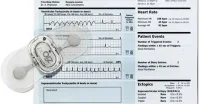According to new research from the Norwegian University of Science and Technology, home-based high intensity training can offer great benefits to cardiac patients who are looking for rapid ways to rehabilitate themselves following a heart attack or another cardiovascular event.
A team of researchers evaluated different forms of exercise as part of rehabilitation, even without the support of specialized training equipment, and has found that certain training, including high-intensity interval training (85-95 % of maximum heart rate), proved to be both a good and efficient form of rehabilitation.
Researcher Inger Lise Aamot, who was recently awarded her PhD from the Cardiac Exercise Research Group at the Norwegian University of Science and Technology (NTNU) in Trondheim, studied the feasibility of interval training both in a clinical context and in home-based cardiac rehabilitation. She conducted a randomized trial consisting of a 12-week cardiac rehabilitation programme with interval training in two Norwegian hospitals.
The study included 90 patients with heart disease, assigning them randomly either to treadmill exercise, group exercise or home-based training. Using heart rate monitors and undertaking interval training twice a week, participants controlled the intensity of their exercise.
As per the results, the treadmill group was able to increase its fitness (as measured by maximum oxygen uptake) to a degree that was significantly higher than those who exercised at home, owed to the fact that several patients in the home exercise group did not exercise in line with the exercise program.
By comparing only those who actually followed the prescribed program however, Aamot found no significant differences between the groups in terms of increases in maximal oxygen uptake. The training intensity was as prescribed in all groups and the majority completed training in 12 weeks.
The participants' maximal oxygen uptake was re-measured again after one year, when Aamot found these levels to be significantly higher than before patients started the 12 week training program.
She further discovered that participants who trained at home for the first 12 weeks showed a strong inclination towards a higher frequency of physical activity compared with those who only trained at the hospital.
Aamot concluded that interval training can be implemented for cardiac rehabilitation efficiently both in the clinic or at home, highlighting however, that home exercise seems to contribute most positively to a long-term physically active lifestyle.
A copy of the scientific article published by Aamot about this research is available on this website.
Source: AlphaGalileo
Image credit: Google
13 December 2013
Latest Articles
Research, Exercise, rehabilitation, cardiac arrest, high intenstity training
According to new research from the Norwegian University of Science and Technology, home-based high intensity training can offer great benefits to cardiac p...










